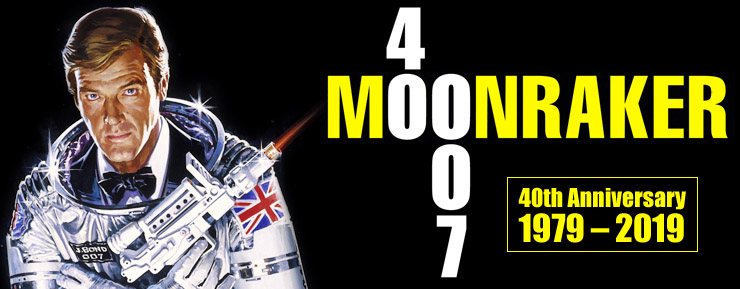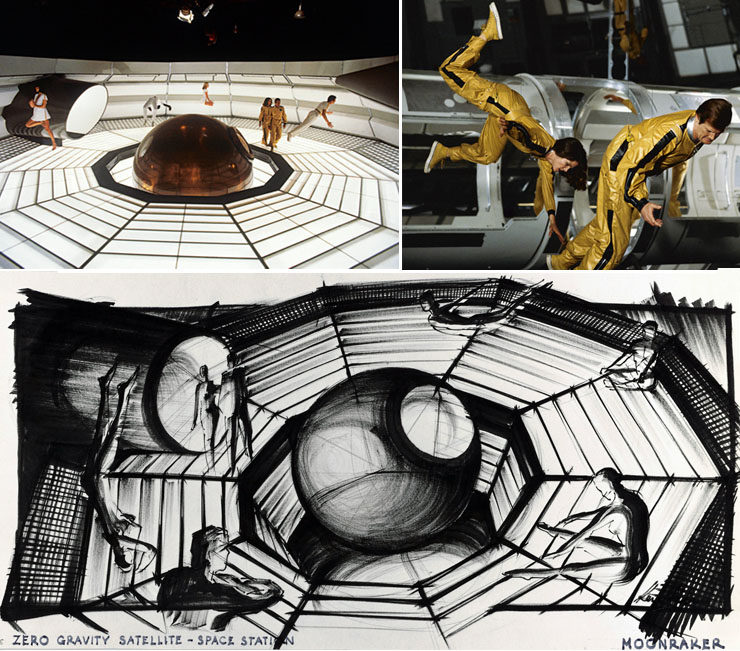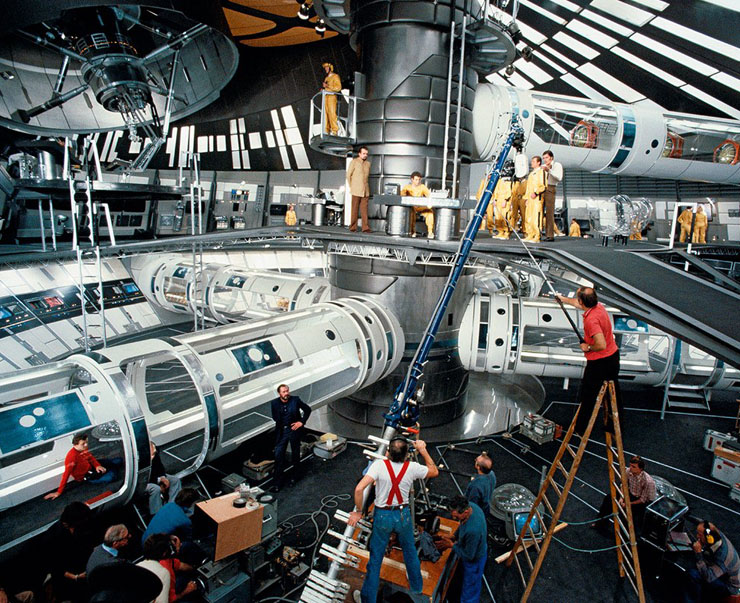Moonraker
|
||
|
||
Moonraker
|
||
|
||
 |
|
|
Location filming on Moonraker got underway in Paris in August 1978 with The Pompidou Centre standing in for Holly Goodhead's office and Drax's American space shuttle complex. The Château Vaux-Le Vicomte south-east of Paris became Drax's Californian mansion, enhanced by an effective matte-painting as Bond approaches by helicopter. The centrifuge sequence was also filmed in Paris resulting in one of the more realistic sequences in the film. Mercifully devoid of a comedy pay-off, the scene portrays Roger Moore's Bond in real danger and physically shaken by his ordeal. Although the fully-functional centrifuge trainer was enhanced with air hoses to simulate the G-Force on Moore's face, camera trickery and John Glen's editing, it remains one of a few stand-out sequences in the early part of the film which showcase the technical artistry of all involved. Bond's use of the wrist-dart which saves his life in the centrifuge was introduced in the scene in M's office. Parts of this set were kept in storage at Pinewood Studios and shipped across the English Channel for the scenes involving Bernard Lee, Lois Maxwell and Desmond Llewelyn. |
|
|
|
|
|
Another effective sequence devoid of comedy is Bond's exploration of Drax's Venetian laboratory where he sees the glass globes that will play an important part at the climax of the film. The combination of Ken Adam's superb set with its hexagonal motifs; John Barry's effective scoring of the sequence and Bond's inability to help the hapless technicians, whose death he inadvertently caused, add up to another well-realised scene that is at odds with what what surrounds it. Although the interior of the laboratory was filmed in Paris, the exteriors were shot in Venice in late September 1978 when the crew moved to Italy to shoot the gondola chase and other location material. |
|
 |
|
|
Jean Tournier's subtle night photography enhances the mood in Venice, but the tone soon shifts as the filmmakers encountered uncooperative tourists and the police's inability to control them. The shooting of the gondola chase is realistically mounted, but ultimately ruined when the boat converts into a hovercraft, whilst Roger Moore bravely battles to control it without killing any unwitting bystanders. Double-taking pigeons and consumptive Italians (British comedy actor Alfie Bass) all help reduce the scene to the lowest slapstick farce and totally undermines any credibility the film still had left. The Venice sequences are redeemed however by some skilfully mounted location shooting at the glass museum and in St. Mark's Square, although the subsequent fight with Chang was actually filmed in Paris. |
|
 |
|
|
Following location shooting in Venice, the crew returned to Paris in late October 1978 to shoot the climactic battle scenes inside Ken Adam's vast space station set built at Epinay Studios. The resultant weightless scene is still effective today, featuring the largest number of performers ever mounted on wires for a motion picture. The actors were all suspended from separate wire harnesses and filmed at very high speed so as to appear weightless when projected normally. A technically challenging scene was expertly realised without resorting to special optical effects, despite being very time-consuming to achieve. Although unbelievable in themselves, the space-station scenes are rendered even more farcical by the amorous antics of Jaws and Dolly. |
|
 |
|
|
A fire on one of the Paris soundstages resulted in the production going over schedule, and an additional sequence inside a zero-gravity satellite was designed by Ken Adam, a set built and footage shot, but this was later omitted from the final film. The first unit was then scheduled to move to Brazil, but in early January star Roger Moore developed a kidney stone, delaying production even further. |
|
 |
|
|
|
|
|
|
|